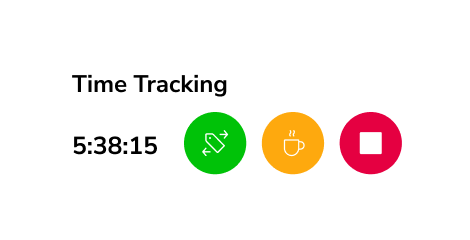The Ultimate Desktop Time Tracking App
Computers.
Mother Nature’s extension of the human mind – well, sort of.
Think about it; it makes sense. What other devices have humans come up with that allow us to tap into the collective consciousness of billions of people at the same time?
Taking a page out of the same evolutionary playbook, our engineering team, here at Jibble, realized that after building our time tracking and timesheet experience for web and mobile, we want to provide our users the flexibility to interact with an architecture more native to their OS, and so – we’ve decided to roll out our desktop application.
I’m sure the first question that comes to mind is: why? Jibble already has a strong presence on Android and iOS, a native web app, and a Chrome extension as well as multiple plugins for tools like Slack and Microsoft Teams.
It’s quite simple really — additional features.
With a desktop app, we get to unlock more powerful capabilities tailored to desktop users — like time tracking with screenshots, which has long been requested by our customers.
Screenshots are captured at random 2-, 5- or 10-minute intervals during clock-ins, giving teams better visibility. To protect privacy, users can control the resolution and blur level — offering the right balance between oversight and trust.
Learn more about how screenshot capturing works in Jibble.

Photo by Domenico Loia on Unsplash
With the desktop app we’ve also managed to automate clocks in and outs. Now, users can be automatically clocked in when the app opens, computer wakes or unlocks, and clocked out when the app closes, computer goes to sleep or locks.
You can even set the app to launch automatically when the computer starts, so time tracking begins right away.
We’re also in the final stages of rolling out even more features, including:
- Keyboard and mouse tracking – Measures productivity by tracking mouse and keyboard activity at intervals of 1, 5, or 10 minutes (only during clock-ins).
- App tracking – Shows which desktop apps are used, how long they’re open, and when (only during clock-ins).
- URL tracking – Tracks which websites are visited, how much time is spent on each, and when (only during clock-ins).
We want to make it clear that Jibble desktop isn’t here to dethrone the Web application – which will still serve as your main platform, especially for settings configurations – rather, the goal here is to have Jibble desktop be an extension of the features of the Web app and increase its usability.
Installation via Microsoft or Mac Store
Now that you know what to expect, let’s talk a little about how the app can be installed.
The app is available on the MacOS and Windows platforms. Users will be able to download the desktop app through the Microsoft and Mac Store. This is to ensure that auto-updates pushed by will be managed by stores, so you, as the user, won’t have to worry about them.
Installation via Installers
I’m happy to say that the Jibble desktop app can now be installed via installers on Windows! Users will only be required to download and install the desktop app on a specific device once. The Jibble desktop time tracking app will come with a built-in automatic updater. Re-installation is not something end users will have to worry about.
How does that happen? Well, once Jibble releases a new version, the desktop app will detect the update, and as soon as the device is turned on or made active from sleep mode, a series of automated tasks will download the new version and replace the old application.
Features and Functionality
Internally, in software development, we use the term “User Stories” to describe the features and functionality that users can expect in a software application, so I’ll stick to our jargon since this is a technical blog.
Currently, you can do the following on the desktop app:
- Clock in, clock out, and go for breaks on the desktop app
- Automatically clock in/out when the app opens/closes
- Automatically clock in when desktop unlocks/wakes and clock out/start break when it locks or falls asleep
- Include activity, project, and notes per applicable time entries
- Go to Jibble web app with a click of a button from the desktop app
- Switch to a different Jibble organization from the desktop app
- Capture screenshots of the employees’ active screens while clocked in
For User Stories, some of the things you can expect from Jibble desktop include:
- Monitor users’ keyboard strokes and mouse clicks throughout their working hours
- Monitor apps and sites a user visits during their work hours
- Monitor idle time at work
Check how Jibble stacks up against top Mac and Windows time tracking apps.
Future Considerations
Our team prioritizes feedback from users and uses it as a compass for further understanding of which direction we need to take as a company. Some future considerations based on feedback include the following:
- Geofencing on the Desktop App (using IP address to extract location) – Ideal for Hybrid companies
- A Desktop app widget
- Alerts to Managers for Idle time (Push/Email Notification)
- Jibble native Pomodoro timer
The thought behind this article and generally this space is to tell you about the systems and the code that power Jibble. We’ll give a glimpse of what happens behind the scenes as our engineering and product teams work to roll out an exceptional user experience.
Expect some technical jargon moving forward, architecture discussions, and a few code samples here and there. If you see something here that resonated with you, something you’d like to discuss or simply give feedback about, feel free to reach out to us via email. Our whole team is excited to launch this new experience, and can’t wait for you guys to try it out!
Related Articles:
8 Best Practices for Desktop Time Tracking
Complete Guide to Desktop Time Tracking
How Far Can Desktop Time Trackers Go – Legally?


